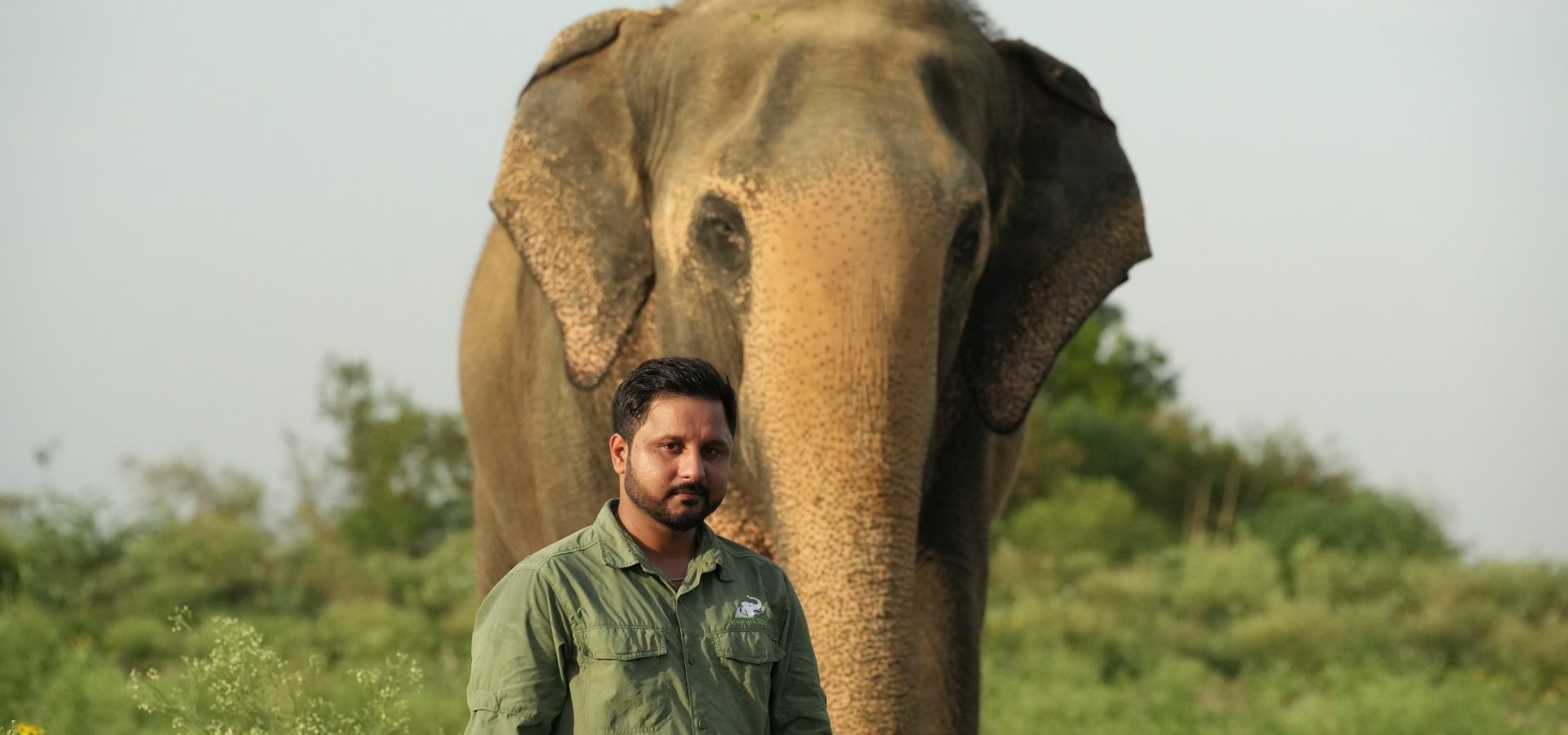The mission of wildlife conservation extends beyond simply protecting wildlife; it thrives on fostering awareness and sharing knowledge. At Wildlife SOS, conservation education stands as a vital tool to shape public perception towards wildlife conservation, and at the heart of this initiative are our dedicated education officers. Their efforts not only inform the public, but also inspire a deeper connection with the natural world, empowering communities to become active participants in protecting wildlife.
An engineer turned conservationist, Harendra Singh’s journey with Wildlife SOS began during a short trip back to his hometown Agra in 2015. During this trip, his long-standing passion for wildlife conservation became a reality that has culminated into nearly a decade of work with the organisation. Now as the Head Coordinator of Wildlife SOS’s Visitor & Volunteer Programme, Harendra is a seasoned educator and an invaluable part of Wildlife SOS’s mission to spread awareness about the urgent need to protect wildlife.

By immersing himself in the intricacies of Wildlife SOS’s initiatives, Harendra has developed interactive proficiency that enhances visitor experiences at the Agra centres, inspiring them to engage meaningfully with our objectives. As the Staff of the Month, let’s take a closer look at Harendra’s unique and passionate journey.
How did you come across Wildlife SOS?
For me, the mention of Wildlife SOS was not unfamiliar as I was born and raised in Agra. I used to attend school near the Soor Sarovar Bird Sanctuary, and would visit the sanctuary whenever I got the chance to. After I graduated from high school, I went on to study engineering, but I never felt completely satisfied with the jobs I did. So, when I heard about an opening at Wildlife SOS, I applied immediately and I am still here, nine years later.

What drew you to the field of wildlife conservation?
I was always passionate about working for animals and being around animals gives me immense joy. If I recall, my first interaction with a wild animal was seeing the infamous ‘dancing’ bear in Fatehpur Sikri during a school picnic. I was a young kid back then, but I subconsciously knew that it was a cruel practice and that thought stuck with me. During my college years, I learned more about the exploitative nature of the trade through articles and dedicated more time to educating myself about wildlife. The more I learned about the cruel practices that wild animals are subjected to in captivity, the more I sympathised with innocent animals. So after all these years, I think it was fate that brought me to work so closely with sloth bears.
Why do you think conservation education is important for people?
When we look back at earlier times, there was a kind of communal approach to caring for animals, especially in rural areas. It was rooted in a community practice that had passed down through generations. But what we see now is that people are more and more disconnected from each other and from nature as well. They are unaware of what’s happening in the wild, whether it is train collisions or plummeting wildlife population numbers. Conservation education brings people back in touch with nature and refreshes their knowledge. I have become a mediator for a cause that is bigger than us. Knowing this brings me immense joy.

How has your learning about wildlife conservation helped you in your work?
Every day I learn a lot of different nuances about the behaviour of elephants and bears, which broadens my knowledge about the animals I work with. I like sharing what I learn, which is why I feel that my role as an education officer has been tailor-made to suit my personality! I have also learned over time that a large number of people are unaware of the inhumane practices that captive animals are subjected to in the name of entertainment or work. Learning about the physical and emotional trauma that each animal carries makes my work more purposeful as I play an active role in bridging the information gap. My role is important in imparting meaningful knowledge, which has the power to shape the future of animal welfare as well as the outlook of each person who walks through the gates to visit our centres.

Which resident animal at our centres are you especially fond of?
Since I have worked in both the Elephant Conservation and Care Centre as well as the Agra Bear Rescue Facility, I love all the resident animals. But if I have to choose, I’d say that among the elephants, I am very fond of Chanchal. Among the sloth bears, Ron’s uplifting energy always puts a smile on my face.
How do you think conservation education helps in ethical tourism?
When I attend to volunteers or visitors, I share the stories of our resident animals. A lot of the visitors are taken aback when they learn about the cruel past of these animals. Education, whether formal or informal, is helpful in dispelling myths and gaining a new perspective towards wild animals. This is a key factor in changing the behaviour of people.

Often, people are captivated by the experience of riding elephants without realising the physical strain it puts on the animals. There is a lack of awareness about the suffering that these large mammals endure for the sake of work and entertainment. The same goes for sloth bears. Through my interactions with visitors, my goal is to promote a comprehensive shift in the way people view animals and nature, which can lead to making more ethical choices when travelling to different destinations. Even if it’s just a single person I attend to, I know they leave with a renewed sense of empathy for wild animals.





